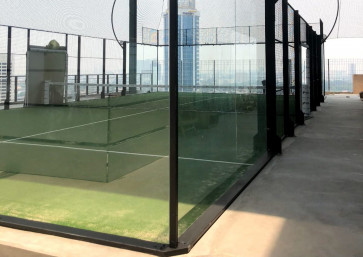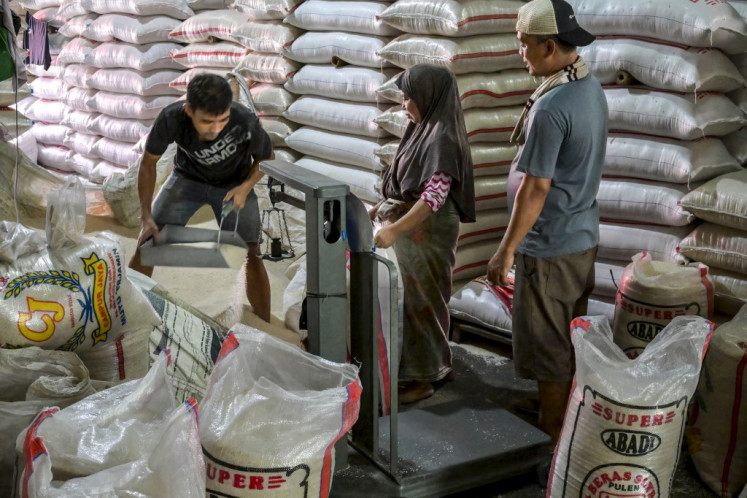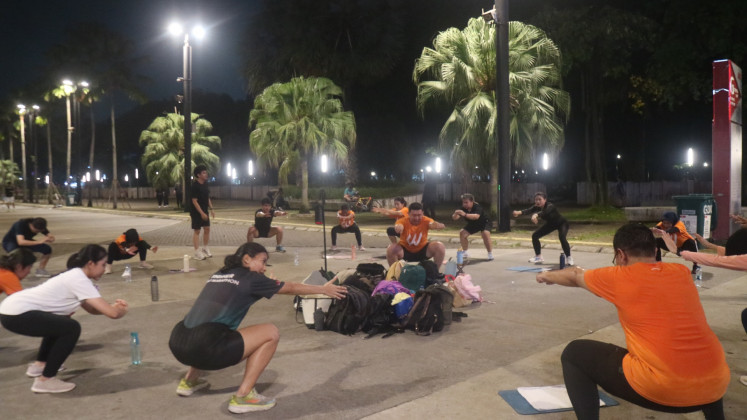Popular Reads
Top Results
Can't find what you're looking for?
View all search resultsPopular Reads
Top Results
Can't find what you're looking for?
View all search resultsNias, Land the People
Nias Island is known as a popular surfing destination and home of the traditional hombo batu stone jumping
Change text size
Gift Premium Articles
to Anyone
N
ias Island is known as a popular surfing destination and home of the traditional hombo batu stone jumping. But, there is more to discover on the island off Sumatra’s west coast.
Nias’s popularity as a surfing spot is contributed to two men, Dick Hole and Jack McCoy, who took the surfing world by storm with their video Riders on the Storm, which was shot on the island and a number of other places in Indonesia.
The island was soon labeled “The Best Right Hand”, “The Most Notorious Right Hand Reef Break in the World” and home of one of “The Best 10 Waves in the World” by surfing magazines. It is currently part of a chain of international surfing competitions alongside Bali’s Uluwatu and East Java’s Grajagan on the Plengkung coast.
The traditional hombo batu stone jumping. JP/Didit Majalolo
Nias is also famous for its stone jumping ritual – where young men jump over 2-meter stone walls in the village of Bawomatoluo, a traditional 200-year-old hill town featuring south Nias architecture and megalithic stones.
The ritual was a way for the village chief to recruit village fighters who were trusted to enforce traditional law and also fight invading enemies.
But, if coming all the way to Nias, known as Taho Niha or the land of the people by locals, tourists should not limit themselves only to stone jumping and surfing.
The island is home to unique traditional architecture as well as a civilization that dates back to the Dongson period of North Vietnam. It is known for its megalithic culture, often described as a living museum of ancient Asian megalithic culture.
The origins of the Nias people are uncertain. But, the elders of the island are convinced that one place, Gomo in Central Nias, is at the roots of their ancestry.
From this place, famous for its megalithic stones, the basic lines of Nias traditional architecture spread.
The most reliable reference works on Nias architecture are Alain Viaro’s Urbanisme et Architecture Traditionnel Du Sud de l’ile de Nias and a book on large houses in South Nias written by the priest Johannes M Haemmerle.
For a one-stop center housing remnants of Nias’ ancient culture, the place to go is the Nias Heritage Museum in Gunungsitoli, North Nias. Managed by the Nias Heritage Foundation, the museum, which was founded by the Catholic Order of Friars Minor Capuchin, houses over 6,000 artifacts.
Nearly six years after massive earthquakes hit the island, the face of Nias has changed.
Modernization, believed by some to have been triggered by the billions channeled into Nias for rehabilitation and reconstruction, is blamed by some for causing people from Nias to want to live in modern homes, forsaking so-called traditional ones, the omo hada.
Fortunately, at least two European charities — the German aid organization Johanniter Unfall Hilfe and the British Turnstone Tsunami Fund — have provided assistance to rebuild the remaining omo hada on the island.
But it would be nice if more is being done to preserve Nias’ cultural heritage, offering much more to tourists than swimming and snorkeling.










